 A few weeks ago I received a call from a friend who asked me (aka The Healthy Non-Profit LLC) to submit a proposal to conduct an organizational assessment for a regional non-profit organization. He recently joined the board of directors of this organization, and during his first few meetings he concluded that his fellow board members might need a little “perspective”. As we spent a little time on the phone framing the proposal, he made a very specific request of me . . .
A few weeks ago I received a call from a friend who asked me (aka The Healthy Non-Profit LLC) to submit a proposal to conduct an organizational assessment for a regional non-profit organization. He recently joined the board of directors of this organization, and during his first few meetings he concluded that his fellow board members might need a little “perspective”. As we spent a little time on the phone framing the proposal, he made a very specific request of me . . .
“Please go into great detail about why it is a best practice for non-profit organizations to invest in an organizational assessment facilitated by an external consultant.”
In the space below, I attempt to elaborate on this question by sharing two personal non-organizational stories that I consider analogies for non-profit organizations. I also end this post by sharing the actual one-page of text I included in my proposal and ask DonorDreams readers to please use the comment box to help me add/subtract to this case for support (for the benefit of future proposals).
Story #1: Mom & Dad aren’t on the same page
 I am a lucky son because both my Mom and Dad are still married and living in the same community and same subdivision where I grew up (except they moved across the street when I went away to college). A few years ago, both of my parents retired and have been trying to figure out what to do with their new found time.
I am a lucky son because both my Mom and Dad are still married and living in the same community and same subdivision where I grew up (except they moved across the street when I went away to college). A few years ago, both of my parents retired and have been trying to figure out what to do with their new found time.
Just the other day while visiting Mom and Dad, the conversation turned to the subject of “To Infinity and Beyond“. To clarify what I mean by this, here are a list of questions that were being asked and not really answered:
- How long do you plan on staying in your current house?
- Have you given any thought to what you want to do when staying where you’re at doesn’t make any more sense?
- Oh? You want to move to Florida? When were you thinking you might do that?
- Where in Florida do you see yourself living?
- Are you keeping the house in Illinois and planning to live like “snowbird retirees“? Or are you selling the house? And when are you planning to do that? And when do you plan on thinning out all of your STUFF?
UGH!
If you’ve ever gone down this road with your parents, you know how frustrating this discussion can become.
In my instance, it became clear that these two people, who spend approximately 75% of their lives no more than 100 feet from each other, were NOT on the same page. I’ll spare you the details (and protect their privacy), but suffice it to say one of my parents has a two-year plan in mind and the other was taking the long view with a 10-year plan. And this was just the beginning of their differences.
So, what does this have anything to do with your non-profit organization and the best practice of periodic organizational assessment?
Simple . . .
Next time you are in your boardroom, I encourage you to stop whatever you’re doing, look around the room at each of your board volunteers and imagine how each one of them would answer the following questions:
- Who are we as an organization? Why do we exist?
- Where are we going as an organization?
- Where should we be going as an organization?
- What is currently working well for us?
- What are we challenged by?
- What opportunities exist outside of our four walls that we should be trying to take advantage of?
- What storms are brewing on the horizon that we need to better position the organization for?
I guarantee that if you do this exercise honestly, you will probably find the same thing I found with my parents which is . . .
You will see awesome people, who are engaged around shared values and a mission, BUT who all have a slightly different view on things that are very important to your organization.
It is for this reason that periodic assessments are necessary. If done by someone external to your organization (possessing a fresh set of eyes and ears), then you can learn a lot about what isn’t being said and then incorporate it into the next step — a planning process (of some sort).
Story #2: My trip to the doctor
 I’ll keep this story short and sweet since this post is getting too long. Yesterday, I went to my doctor for my annual physical.
I’ll keep this story short and sweet since this post is getting too long. Yesterday, I went to my doctor for my annual physical.
Why did I go?
- A bump recently appeared on my finger
- I’ve been fatigued more than usual lately
- I’ve had the same cold virus going on five weeks now
- And a variety of other little reasons that I shouldn’t go into on the internet LOL
You’ve probably heard that an annual physical examination by your doctor is a best practice. In fact, it is strongly encouraged by most insurance companies that typically don’t even charge you a co-pay for such a visit.
Why is this form of annual assessment of your health considered so important by health practitioners?
Simple . . . there are things you cannot see and do not have knowledge of that this assessment will help diagnose and lead you to act upon. The same logic holds true for your non-profit organization.
 Asking a small favor of you . . .
Asking a small favor of you . . .
As I explained at the beginning of this post, the following is approximately one page of text that I included in my recent proposal. Would you please do me the small favor of reading it and provide your two cents on what you would add or subtract from this written case for support? You can also simply tell me what is missing (or what you really like) in the comment box below. My plan is to incorporate your feedback into the next proposal I’m asked to write like this one. Thank you in advance for your help. 🙂
Why is periodic assessment a best practice?
In layman’s terms, periodic organizational assessment is akin to a physical exam that people periodically engage in with their physicians.
While assessments take many different shapes, almost all attempt to answer the following questions:
- Who are we?
- Where are we now?
- Where do we want to go?
Answers to these questions typically become a precursor to board activities such as creating an organizational:
- Long term plan
- Strategic Plan
- Business Plan
- Short-term tactical plan
While looking carefully at the question of “Who are we” might seem silly to some people, it is important because organizations morph and change over time. Moreover, the “need(s)” that an organization was initially created to address may no longer exist or may have evolved.
The question of “Where are we now” is oftentimes difficult to ascertain without the help of an external consultant. The reason for this is the same reason people pay therapists / counselors to help assess what is going on inside of ourselves. The simple truth is that it is hard to get outside of our own bodies to see what is really going on. What makes this even more difficult with non-profit organizations is the fact that there are many different people sitting around the boardroom table oftentimes with various opinions and perspectives.
The question of “Where do we want to go” is more of a planning discussion than it is an assessment question. However, good organizational assessments have the ability to access what various stakeholders are thinking about the future. Being able to see all of these different viewpoints can help the board frame productive discussions at the start of a planning process focused on vision and goal setting.
As it is illustrated on the previous page, organizations go through a predictable lifecycle, and an organizational assessment can help board volunteers see where they are at in that cycle and have productive discussions about what to do about it.
Thanks for indulging me today. I appreciate being able to share a few stories and a portion of a business proposal with the smart readers of the DonorDreams blog. I truly believe that we can all learn from each other (as I’ve stated hundreds of times over the last five years of blog posts). Today, I am doubling down on this believe by asking for your feedback. I appreciate your willingness to participate in such an exercise.
Here’s to your health!
Erik Anderson
Founder & President, The Healthy Non-Profit LLC
www.thehealthynonprofit.com
erik@thehealthynonprofit.com
http://twitter.com/#!/eanderson847
http://www.facebook.com/eanderson847
http://www.linkedin.com/in/erikanderson847
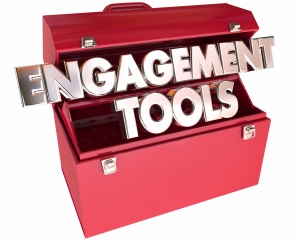 This is part four in a five part series that I started a few weeks with two posts titled:
This is part four in a five part series that I started a few weeks with two posts titled:
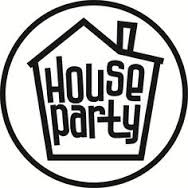 As a young non-profit professional, who was just learning his craft, I was first introduced to the idea of a “house party” event format as a fundraising technique. The idea was simple. Ask someone to host a small party in their home. Work with them to identify a guest list of potential donors from their list of friends and colleagues. Make a group ask during the get together and collect pledge cards. My former employer used to call these “leadership circle” events.
As a young non-profit professional, who was just learning his craft, I was first introduced to the idea of a “house party” event format as a fundraising technique. The idea was simple. Ask someone to host a small party in their home. Work with them to identify a guest list of potential donors from their list of friends and colleagues. Make a group ask during the get together and collect pledge cards. My former employer used to call these “leadership circle” events.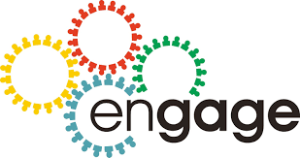 Last week’s experience helped me see house parties in a whole new light. No longer was this strategy simply a tool in a non-profit person’s resource development toolbox. The more I thought about it, the opportunities seemed to be endless. Here are just a few of my thoughts:
Last week’s experience helped me see house parties in a whole new light. No longer was this strategy simply a tool in a non-profit person’s resource development toolbox. The more I thought about it, the opportunities seemed to be endless. Here are just a few of my thoughts: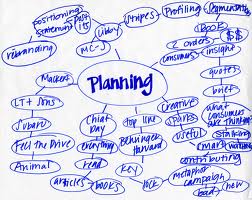 I love Seth Godin and his ability to make you think with what must be some of the world’s shortest blog posts ever. Did you see his recent post titled
I love Seth Godin and his ability to make you think with what must be some of the world’s shortest blog posts ever. Did you see his recent post titled  A few weeks ago I received a call from a friend who asked me (aka
A few weeks ago I received a call from a friend who asked me (aka  I am a lucky son because both my Mom and Dad are still married and living in the same community and same subdivision where I grew up (except they moved across the street when I went away to college). A few years ago, both of my parents retired and have been trying to figure out what to do with their new found time.
I am a lucky son because both my Mom and Dad are still married and living in the same community and same subdivision where I grew up (except they moved across the street when I went away to college). A few years ago, both of my parents retired and have been trying to figure out what to do with their new found time. I’ll keep this story short and sweet since this post is getting too long. Yesterday, I went to my doctor for my annual physical.
I’ll keep this story short and sweet since this post is getting too long. Yesterday, I went to my doctor for my annual physical. Asking a small favor of you . . .
Asking a small favor of you . . .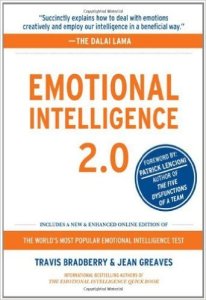
 Some of you might be wondering, “What is the world is emotional intelligence?” and the answer is somewhat complex because it involves brain science.
Some of you might be wondering, “What is the world is emotional intelligence?” and the answer is somewhat complex because it involves brain science.

 As the curtain falls on 2015 and a new year bursts onto the stage, I can’t help getting excited for countless non-profit organizations across this great land of ours. As many of you know, I am a planner by training with both a BAUP and MUP from the University of Illinois Urbana-Champaign. Embedded in every planner’s soul are ideas such as:
As the curtain falls on 2015 and a new year bursts onto the stage, I can’t help getting excited for countless non-profit organizations across this great land of ours. As many of you know, I am a planner by training with both a BAUP and MUP from the University of Illinois Urbana-Champaign. Embedded in every planner’s soul are ideas such as: As most of you know, I’ve been traveling A LOT lately and I haven’t had the opportunity to watch a lot of television. However, it seems like every time I have the TV turned on, I’m seeing a television commercial from General Electric (GE) that talks about “ideas”.
As most of you know, I’ve been traveling A LOT lately and I haven’t had the opportunity to watch a lot of television. However, it seems like every time I have the TV turned on, I’m seeing a television commercial from General Electric (GE) that talks about “ideas”. However, there is much, much more to leading change than the simple six step model that some organizational development consulting/training companies teach, and I suspect it has something to do with your organization’s culture. This is where I think all of us can learn from The Walt Disney Company, home of “Imagineering”. (Note: this term is trademarked by Disney)
However, there is much, much more to leading change than the simple six step model that some organizational development consulting/training companies teach, and I suspect it has something to do with your organization’s culture. This is where I think all of us can learn from The Walt Disney Company, home of “Imagineering”. (Note: this term is trademarked by Disney)